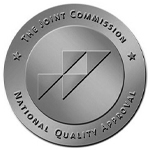
Many people associate bunions with old age and view them as something you just need to live with. However, this painful condition can happen to people of any age. The good news is, you don’t need to live in pain; treatments are available. Even in severe cases, surgical procedures are much less invasive and require less recovery time than surgeries of the past.
Dr. David Pagnanelli Jr., a board-certified podiatric surgeon at Keystone Foot And Ankle Center, regularly sees the benefits of bunion correction in his patients. One minimally invasive surgery he uses for severe bunions is the Mini Lapiplasty. Dr. Pagnanelli, who has performed more than 100 of these surgeries and has achieved a Lapiplasty Center of Excellence designation, explains more about the procedure in today’s Take Care article.
What are bunions?
Hallux abductovalgus, or more commonly known as a bunion, is a progressive disorder involving bones and soft tissues inside your foot. It is typically described as a bump on the inside of your foot that hurts. Bunions begin with the big toe starting to lean towards the second toe. When that happens, over time, the pressure from your body weight starts throwing the tendons, ligaments and muscles out of alignment and your bones start to shift because of the stress. Gradually over the years, the angle of the bones increases producing the characteristic bump, which increasingly becomes prominent. People don’t usually have symptoms until the very late stages.
Who is at risk for bunions?
Any person of any age can develop a bunion. They can arise from genetics (most common), walking dynamics or injury/trauma.
How can you tell if you have a bunion?
Bunions are very noticeable. The bump on the inside of your first toe will stick out. It can be red and swollen, hurt with tight shoes or after just walking for an hour or more.
When is it time to see a doctor?
When you start having symptoms – pain, swelling, throbbing, stabbing or shooting pains. When shoes start not to fit or you have a noticeable stretching of shoes in the size and location of the bump on your toe, you are experiencing pain around your big toe joint or are having trouble wearing normal shoes, please schedule an appointment to see a podiatrist.

How are bunions treated by a podiatric surgeon?
I start with conservative therapy. X-rays will always be taken, and recommendations will be given for changing shoe gear, orthotics, padding, etc. When the X-rays show an advanced bunion and conservative therapy hasn’t improved the patient’s symptoms, we discuss surgical options. For convenience, we offer X-rays right in our office.
What is a Mini Lapiplasty?
The Mini Lapiplasty procedure from Treace Medical is a minimally invasive surgery that corrects bunions by addressing the underlying unstable joint at the base of the big toe, rather than just removing the bony bump. In contrast to traditional bunion surgery, it repositions the entire metatarsal bone in three dimensions, restoring proper alignment and stabilizing the joint with titanium hardware. This approach aims to provide a more lasting and effective solution for bunions.
Traditional treatment from other procedures requires you to be completely non-weight bearing for six to eight weeks. When I perform a Mini Lapiplasty, I only ask patients to be non-weight bearing for two weeks, followed by four weeks weight bearing in a boot; though this can vary depending on age, strength and density of bone and activity level. I perform this surgical procedure with a roughly 2-centimeter incision, compared to the traditional surgical method which requires a 6–8-centimeter incision.
If you think you have a bunion, please call and make an appointment with our office. We may be able to stop or slow the progression, in order to help you avoid pain and surgery in the future. If you think you have an advanced bunion and it causes you daily pain, we may be able to curve the pain with conservative therapy to avoid surgery as well.
Keystone Foot and Ankle is accepting new patients in our Chambersburg and Waynesboro offices! Click here for more information.
This article contains general information only and should not be used as a substitute for professional diagnosis, treatment or care by a qualified health care provider.




